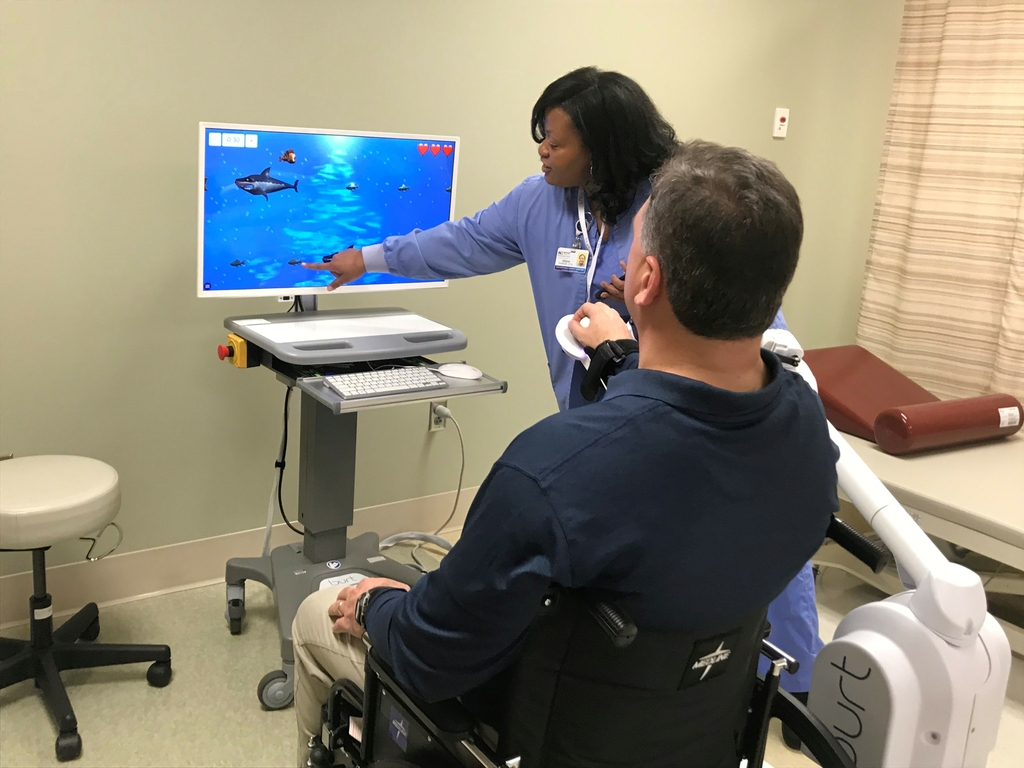Gaming has been investigated as a therapy for a range of problems, including balance, mobility, memory, and arm function. Video gaming is a relatively new area in neurorehabilitation, and recent studies have shown that video gaming can aid in limb neurological recovery.
The rising population raises fresh problems for the healthcare system. People are living longer with illness and disability, putting a larger burden on health care services.
Therapists should be able to manage the number of cases and interact with additional patients if more telehealth is incorporated into conventional rehabilitation for people with chronic illnesses.
Using consoles to supplement therapy is a cost-effective approach for patients to extend their treatment time outside of therapy.
Additionally, when adding console-based gaming into practice, it’s important to think about patient engagement. According to research, the use of consoles and virtual reality treatment has a beneficial impact on patient motivation.

Console-Based Therapy:
The field of study concerned with the application of technology in physiotherapy is referred to as console therapy. Regardless of the source of limitation, the main goal of most neurological rehabilitation is to help people learn or relearn motor skills.
The mechanism by which motor skills are created is to repeat the same activity hundreds or even thousands of times. On the other side, rehabilitation is time-consuming and needs a lot of sessions with therapists that put a strain on personnel and healthcare budgets.
Patients become weary of rehabilitation and find it boring or uninteresting. It’s been estimated that compliance with lengthy physical therapy treatments involving exercise regimens is also increasing.
The incorporation of console-based gaming into rehabilitation programs has the potential to disrupt the existing rehabilitation paradigm. Game-based therapy can be tough, interesting, and enjoyable when done correctly.
Patients may improve their balance, bowl a strike in the virtual bowling alley, or drive a go-kart around a racecourse on a desert island instead of attempting to balance while extending out and grasping the therapist’s hand.
Rehabilitation software based on the console is not meant to replace clinicians. It’s an additional source of interest to enhance compliance rates and improve the comprehensive functional outcome of patients.

What do Consoles involve?
- A television or a medium that is linked to a box or piece of equipment and transmits information.
- It may be used with any sort of game, commercial or rehabilitation-based.
- Tablets may have a distinct user interface that requires inputs into televisions or other devices, and they may be more portable than consoles.
Benefits of Console-Based Therapy:
Patients not only have a good time, but they also profit from the therapeutic elements of gaming, such as:
- Motor Movement: Adaptive video game controllers can help individuals with mobility limitations improve their dexterity and muscle memory by pressing buttons and moving joysticks.
- Cognition: Memory and reasoning abilities are trained by a puzzle or strategy-based games.
- Vision and Perception: Aim-based games, for example, help to improve hand and eye coordination.
- Strength and Balance: Repetitious exercises, such as those needed in many video games, aid in the development of strength over time. Games that focus on movement can help strengthen your balance.
- Pain Management: Headspace and Breathe2Relax are two video games that might assist with pain management, as well as teach relaxation techniques.
- Fitness: Sports games, such as Wii Fit, Nintendo Switch sports titles, and Xbox Kinect Adventure are the games that promote general fitness and health.
Conclusions:
According to recent studies, for neurological sufferers, the combination of consoles with conventional therapy is an economically advantageous way to ensure complete recovery.
Virtual reality has the potential to enhance many people’s lives, particularly those with neurological impairments. It is not only tailored to specific regions of the body; it also appeals to its target audience, both young and old.
This is especially essential, not just because neurological impairments need a lengthy rehabilitation and a lot of repetitions, but also because motivation loss as a result of monotony is taken into account.
There is also a scarcity of information on persons with impairments, owing to the fact that few researchers have focused on how VR may be integrated with blind, deaf, or wheelchair-bound individuals.
But convenient, affordable, and safe to use, consoles and tablets are a realistic choice to complement neurological therapy.
Barvi Bandral
Physical Therapy Student
President
Punjab State Student Wing
GAPT






